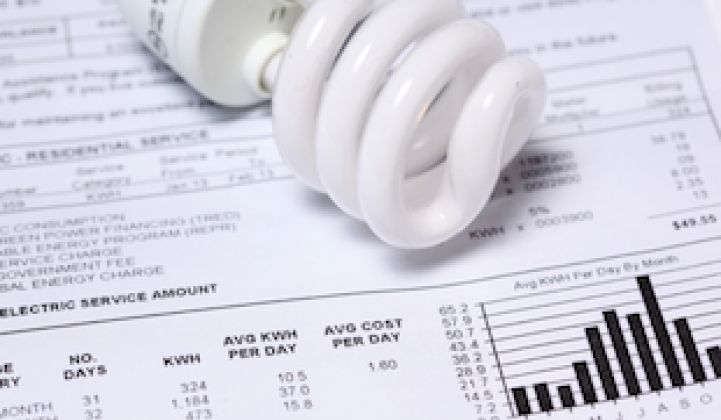The U.S. is on track for strong growth in utility energy efficiency investments due to an emerging suite of state-level policies.
From 2006 to 2010, spending on utility-funded energy efficiency programs doubled from $2 billion to $4.8 billion. While future growth won't be quite as dramatic, investments in programs to reduce electricity and natural gas consumption are expected to double again by 2025. Much of that growth will be driven by targets set by state legislatures that are known as Energy Efficiency Resource Standards. Like a renewable energy standard, these policies establish a legally binding efficiency target for electricity or natural gas.
"Energy efficiency standards are the next generation of efficiency policy," said Galen Barbose, an electricity analyst at Lawrence Berkeley National Lab (LBNL). "Along with other important legacy programs, these standards are really diversifying the energy efficiency landscape."
Barbose and three other analysts at LBNL recently looked at the influence of utility-funded efficiency policies being deployed around the country, projecting sustained growth over the next decade and a half. According to their analysis, spending on efficiency programs could likely reach $9.5 billion -- and potentially surge to $15.6 billion with the right set of market conditions. Energy efficiency standards and renewable energy standards that factor in efficiency as a resource will account for 72 percent of that spending.
Historically, utility energy efficiency programs were mostly located in the Northeast and West, where more progressive regulatory policies have been in place. In 2010, more than 70 percent of spending on efforts to reduce electricity and natural gas consumption occurred in those regions. But as more states implement efficiency targets or better resource-planning requirements that encourage efficiency, the geographical balance is starting to shift. The LBNL analysis projects the Midwest and South will account for 50 percent of spending by 2025.

The steady ramp-up of these utility targets, some of which are designed to sustain reductions in electricity consumption by 2 percent a year, would reduce growth in electricity sales by 0.04 percent under a medium investment scenario. According to LBNL, that could potentially offset all electricity load growth projected by the Energy Information Administration through 2025.
But there are a number of factors that could determine the effectiveness of these programs.
If the economy remains sluggish and the real estate market doesn't pick back up, customer adoption of energy efficiency retrofits may also be surpressed. At the same time, lawmakers and regulators will be increasingly sensitive to the costs of these programs, particularly if incentive levels are increased due to slower-than-expected adoption rates. In some states, there may even be legislative pushback against policies from conservative lawmakers worried about mandates for renewables and efficiency. (While there does not seem to be a nationally coordinated effort to roll back efficiency laws, many local groups -- some with ties to the Tea Party -- have challenged such policies.)
The low price of natural gas will also influence programs. If natural gas prices remain suppressed, the benefits of lowering consumption are greatly reduced. Prices are expected to climb over the coming decades, but the historic lows will mean that consumers have less incentive to decrease consumption.
Competition between the federal government and states will also influence how utilities roll out their programs. As the Department of Energy establishes minimum efficiency standards for appliances and industrial equipment, the baseline for efficiency rises. This means utilities have to be more creative in how they encourage their customers to reduce energy use.
"In some states, it’s a little early to say how effective the policies will be. They’re in the early stages of implementing these policies and they're just now putting in the regulatory infrastructure to get them moving," explained Barbose. "There are certainly a lot of big picture issues on the horizon that may affect the trajectory of these programs."
If recent experience is an indication, energy efficiency standards will likely have a strong impact even with so many uncertainties. According to the American Council for an Energy Efficiency Economy, there are now twenty-four states with Energy Efficiency Resource Standards -- accounting for 67 percent of electricity sales in the U.S. So far, thirteen of the twenty states with efficiency standards in place for more than two years have met 100 percent of their targets, and only three states are below 80 percent of their targets.



